20 Highly Effective Sales Prospecting Techniques for 2023
Jenny Keohane
Gone are the days of picking up the phone, dialing the next number on your lengthy list of prospects, and making an instant sale.
Consumers today are more skeptical than ever. And this has made it incredibly difficult for salespeople to get their foot in the door with new leads. As a result, sales reps are having to rework the way they reach out to prospects.
In today’s consumer-savvy age, successful sales prospecting techniques range from a variety of methods using a variety of channels.
From social media to cold outreach to referrals, the methods are endless. But what’s really moving the needle in 2023?
Let’s look at 20 highly effective sales prospecting techniques that’ll help fill your pipeline and get your sales process moving.
We’ll cover sales prospecting techniques for:
Sales Prospecting Techniques For Cold Emailing
1. Ask for Referrals
Asking for referrals is one of the most powerful sales prospecting techniques today. Why? Because word-of-mouth is the most trusted source of information.
Studies show that 93% of consumers trust recommendations from friends and family over anything else.
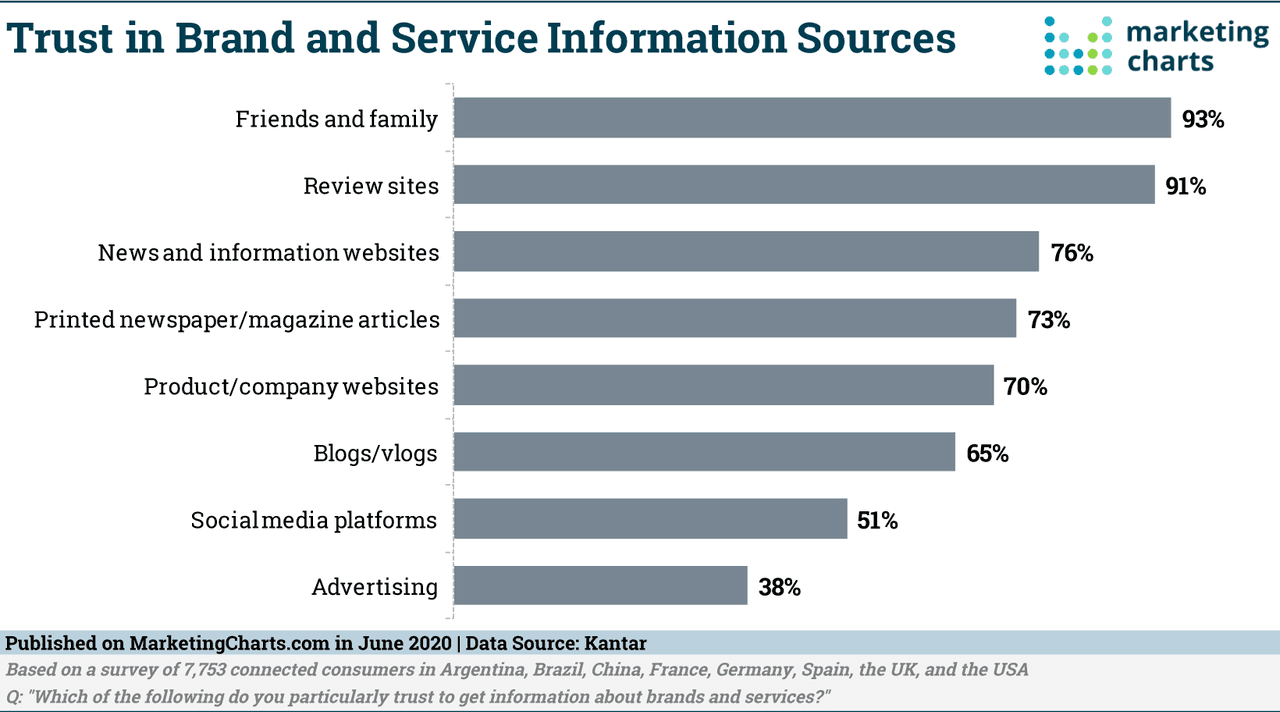
Past and current satisfied customers are your best referral source. Before reaching out, make sure you 1) have a good relationship with them and 2) have helped them just as much as they’re about to help you.
Remember, timing is important. Make sure you time your asks strategically.
For example, if your customer has finished onboarding and is happy with their purchase or just achieved success using your solution, that’s the best time to ask. Politely ask if there’s anyone in their professional network who might benefit from the product or service you’re selling. The worst thing that can happen is they say no.
Tip: Here’s a guide on how to get referrals from customers.
2. Go Behind the Scenes
Consumers today crave a human connection with the brands they invest in. This might seem contradictory when you consider that most purchases are made on a computer behind the anonymity of a screen, but it’s actually never been more true.
Consumers are far more likely to buy from people they like and can relate to rather than someone who’s stuck on the sell, sell, sell carousel like a robot.
This is why you need to personalize the buyer experience and show your human side.
One great way to accomplish this is by using video to create as much of a human connection as you can behind the veil of a screen. Try creating short, useful videos such as product demos or videos highlighting the benefits of your solution.
Here’s an example:

Don’t worry about making your videos look professional – your prospects are far more interested in seeing you and what you have to say.
3. Source New Contact Data
Sales reps can easily expand their reach by leveraging one of the many robust prospecting tools on the market today.
For example, let’s look at Prospector.
Prospector gives you access to a dataset of 100+ million business profiles where you can find verified work phone numbers, email addresses, LinkedIn profiles, and more.
The tool allows you to pinpoint the right leads with advanced search filters including name, job title, seniority, location, company name, company size, industry, etc.
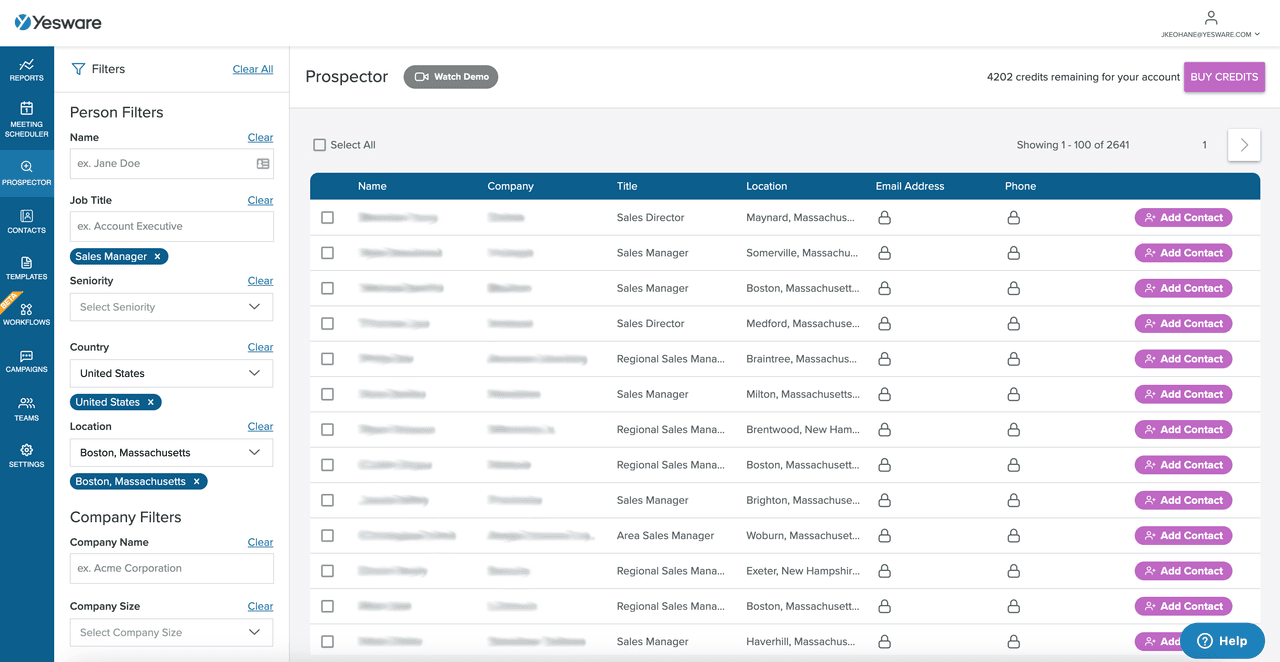
Add new contacts that fit your buyer personas, do your research, and reach out in a highly-personalized way.
4. Reference a Hiring Pain Point
Check the open job listings on your prospect’s company’s website to see if they’re hiring anyone. This will indicate pain points that have prompted them to look for help in that specific area.
Use this as leverage to bring up the issues your prospect is experiencing and then offer a more immediate solution than a new hire.
Here’s an example of how you can do this:
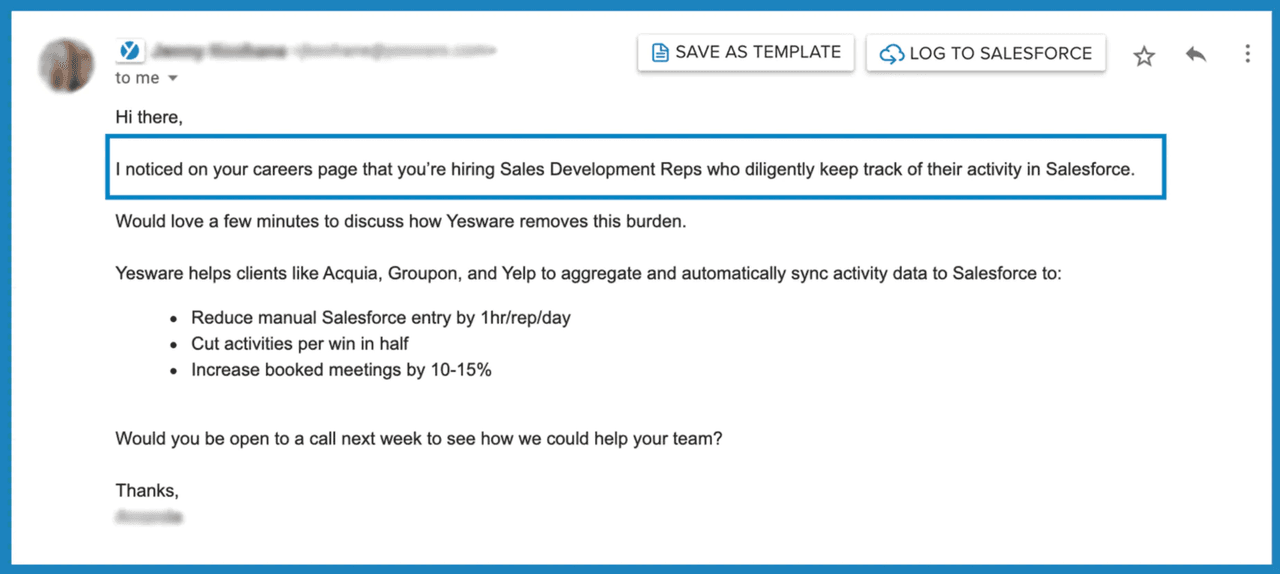
5. Dig Deeper: Understand the Psychology of Sales
Understanding the psychology of sales is one of the top sales skills you can have and will play a vital role in your sales prospecting techniques.
Emotion drives purchases. And if you can further understand these emotions and reasons as to why buyers act, you’ve unlocked a secret weapon.
One step to truly understanding and mastering the psychology of sales is to understand Dr. Robert Cialdini’s six principles of persuasion. 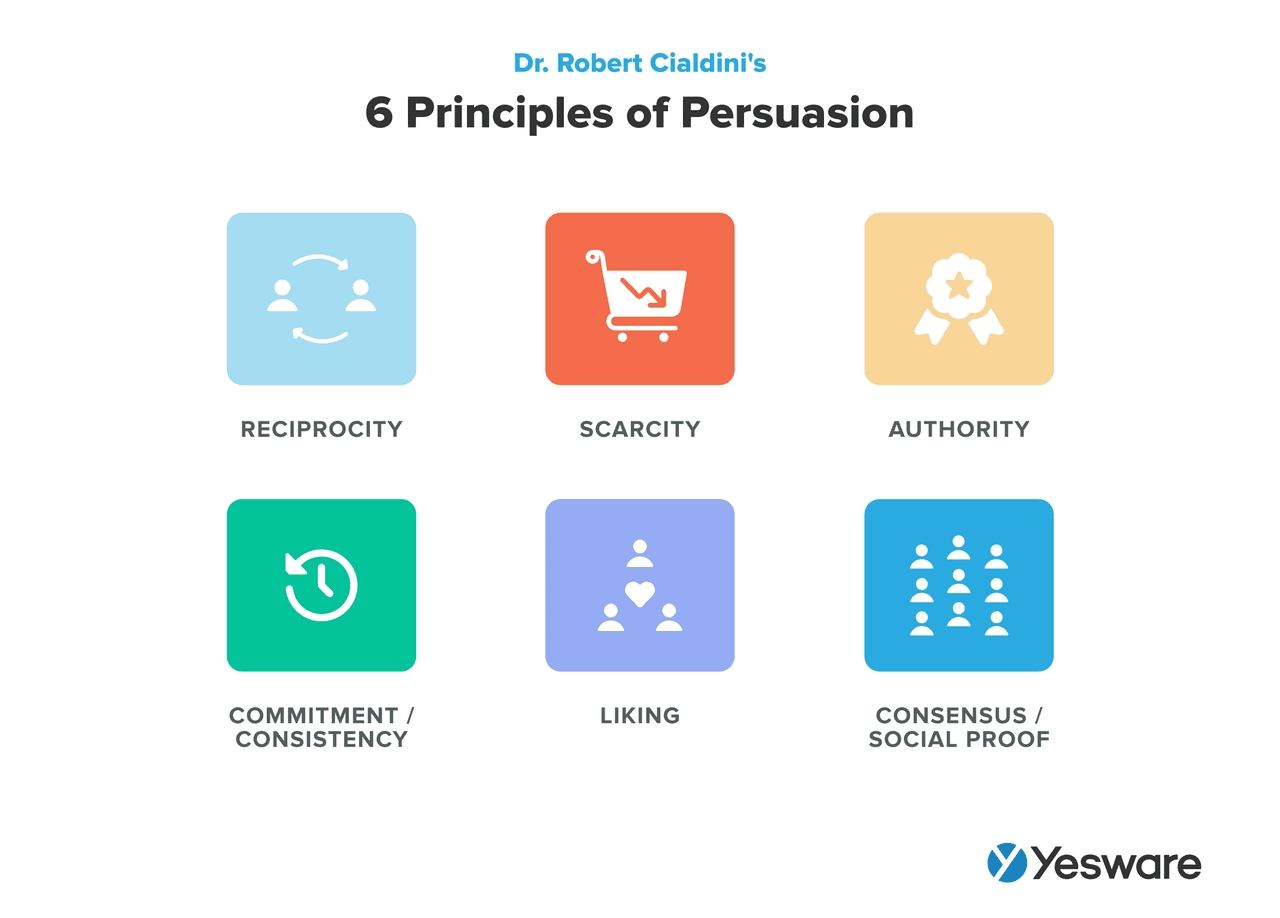 How to use these principles in sales:
How to use these principles in sales:
- Reciprocity: People feel obligated to reciprocate when someone offers them something of value. For salespeople, this means acting as a consultant throughout the buying process by providing the prospect with educational tips, industry insights, and helpful resources.
- Scarcity: This tactic influences prospects by adding a sense of urgency to the sales process. You can achieve scarcity with limited-time offers and discounts.
- Authority: People who can provide a sense of credibility and expertise are naturally more persuasive than those who seem less knowledgeable. You can achieve authority by pointing to industry leaders and successful businesses that use your product/service, this will help reassure prospects that your solution is a good investment.
- Commitment: People tend to stick with something to which they’ve already committed. This is one reason why free trials are so effective. The more you can get prospects to agree to a “mini-yes” to something minor, the more likely they are to continue that mindset when you ask them to commit to more significant terms.
- Consensus: Complex purchase decisions can be challenging for the human brain. An easy way to give the prospect the reassurance they’re looking for is by offering social proof; case studies and testimonials are some of the most powerful and persuasive tools in a salesperson’s arsenal.
- Likeability: People need to feel like they actually like the person from whom they’re considering a purchase. There are several scientifically-backed strategies that can help you efficiently earn your prospect’s trust and respect; try making connections, mirroring their personality, giving them compliments, and asking questions.
6. Leverage The Power of Social Proof
Social proof is one of the most persuasive techniques for getting recipients to take action. 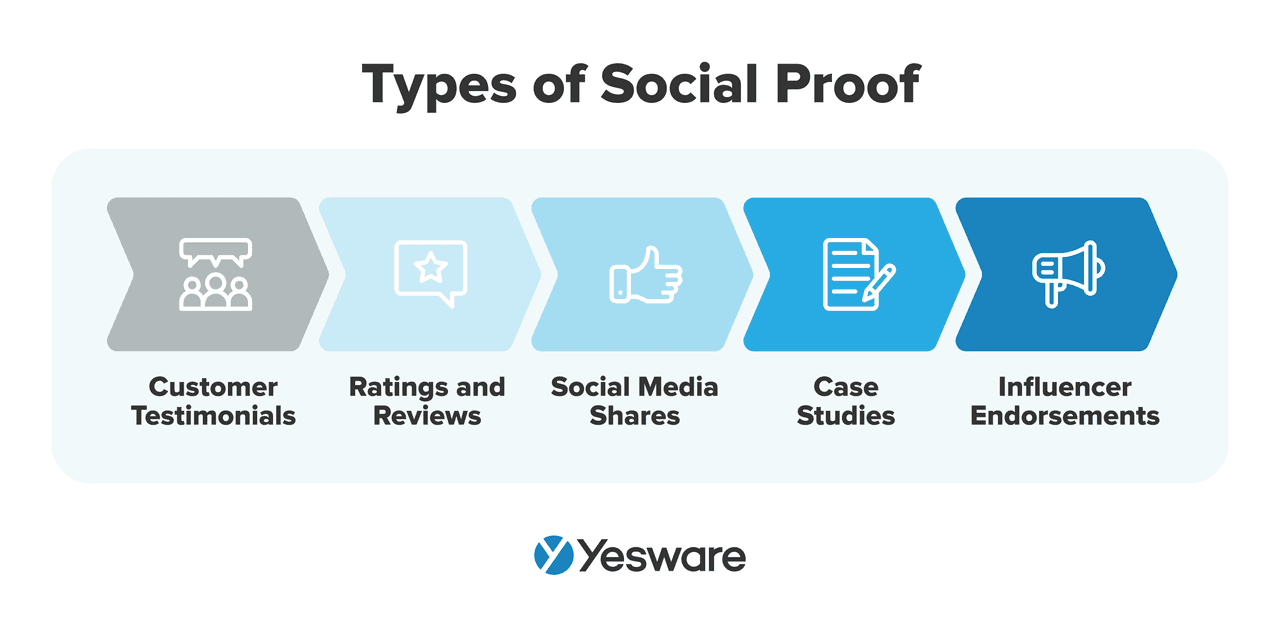 Why? We base our judgments on other people’s. When consumers are uncertain about a purchase, they look to the behaviors and actions of others to help determine their own.
Why? We base our judgments on other people’s. When consumers are uncertain about a purchase, they look to the behaviors and actions of others to help determine their own.
This is why big brands pay celebrities millions of dollars to endorse their products. Consumers get that validation from someone they look up to or trust, which helps make the decision easier.
How to leverage social proof in your outreach:
- Mention three recognizable company names that use your solution
- Include a quote from a customer in a similar role to your recipient
- Provide social proof at the end of every email you send
7. Always Follow Up
Always, always follow up. Follow-ups can turn a cold email that goes unanswered into a mutually beneficial conversation that leads to a close.
When it comes down to it, not following up on your cold email means you’ve given up. And by doing so, you significantly decrease your chances of getting a reply. 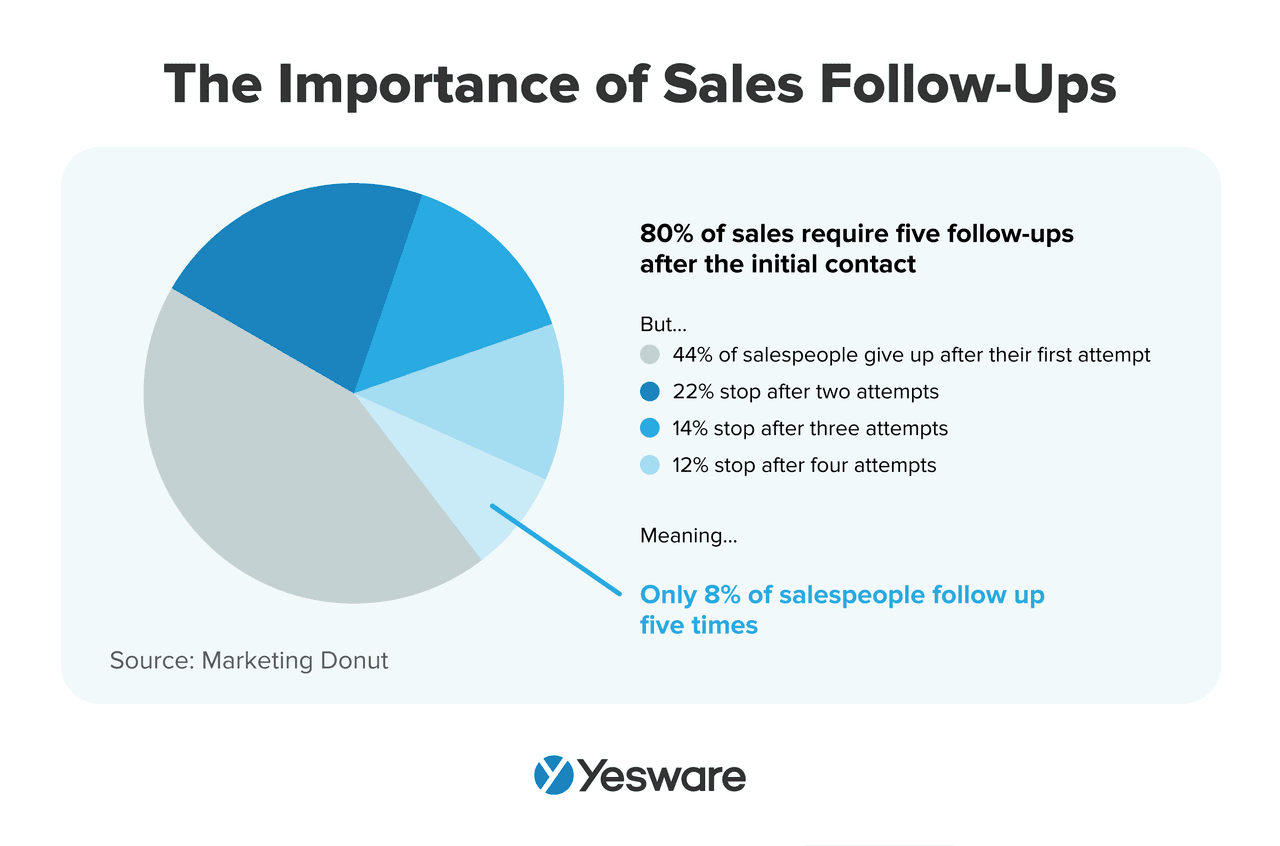 In our sales follow-up statistics study, we found that the most successful cadence based on replies is six touches in the span of roughly three weeks.
In our sales follow-up statistics study, we found that the most successful cadence based on replies is six touches in the span of roughly three weeks.
The follow-up cadence chart below shows the average cadence used by reps who received replies vs. those who didn’t.
 What our data predicts is the most successful follow-up cadence:
What our data predicts is the most successful follow-up cadence:
- Follow-up #1: 3 days
- Follow-up #2: 7 days
- Follow-up #3: 11 days
- Follow-up #4: 15 days
- Follow-up #5: 19 days
- Follow-up #6: 22 days
Here’s an example of a follow-up email that redemonstrates the value of your offer:
Hi {First Name!},
I know you’re busy so I wanted to reach back out about my earlier request — have you had a chance to review the {!What you sent over} that I sent over {!When you sent it}?
{!1 sentence summarizing what you have is new, comprehensive, or groundbreaking}
{!Finding 1}
{!Finding 2}
{!Finding 3}
And more… Reattaching the {!Report or other source of further info}.
Thank you for your time and looking forward to your feedback,
Tip: If you’re looking for more email templates –> 20 prospecting email templates.
8. Send Multi-Touch Email Campaigns
Email campaigns are a great way to reach multiple potential customers at once. But this doesn’t mean you should utilize the outdated practice of spray and pray.
When sending prospecting campaigns, it’s important to reach out to a targeted audience with highly personalized messaging.
In fact, a study conducted by Drift found that the killer combo is using personalization with smaller audiences.
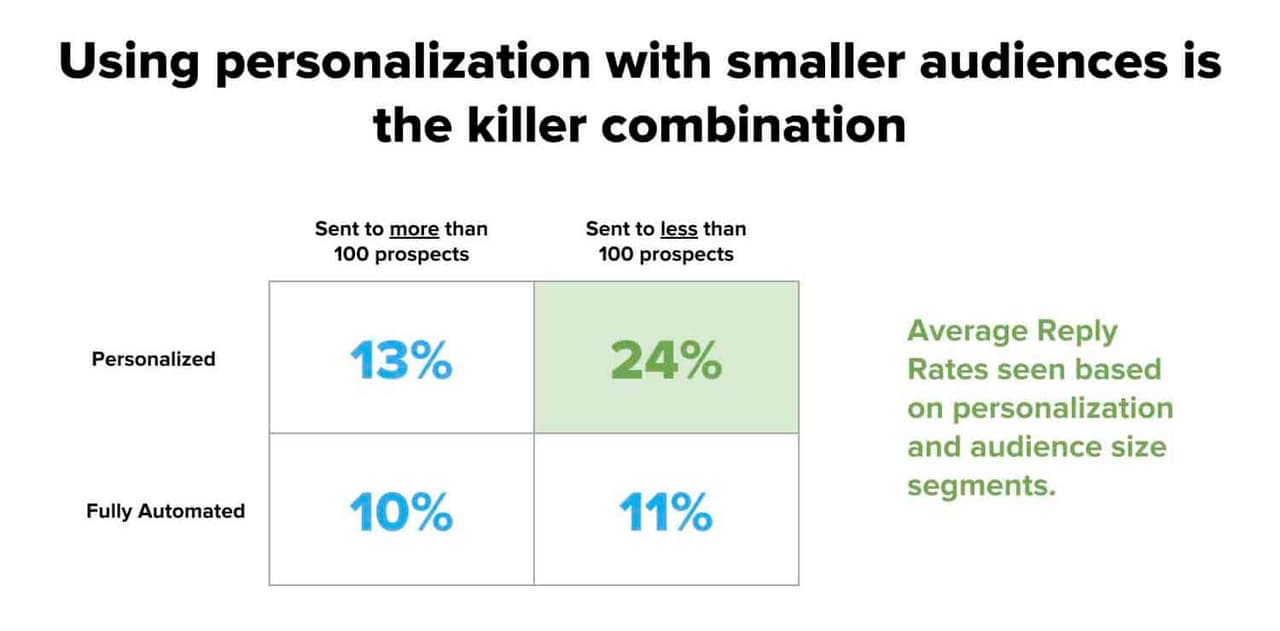
Sales tools and automation make personalizing emails to multiple recipients much easier.
For example, Yesware’s campaigns feature allows you to send multi-touch multi-channel emails that include email, call, and social touches. You can insert email templates into your touches and highly personalize each touch with merge fields.
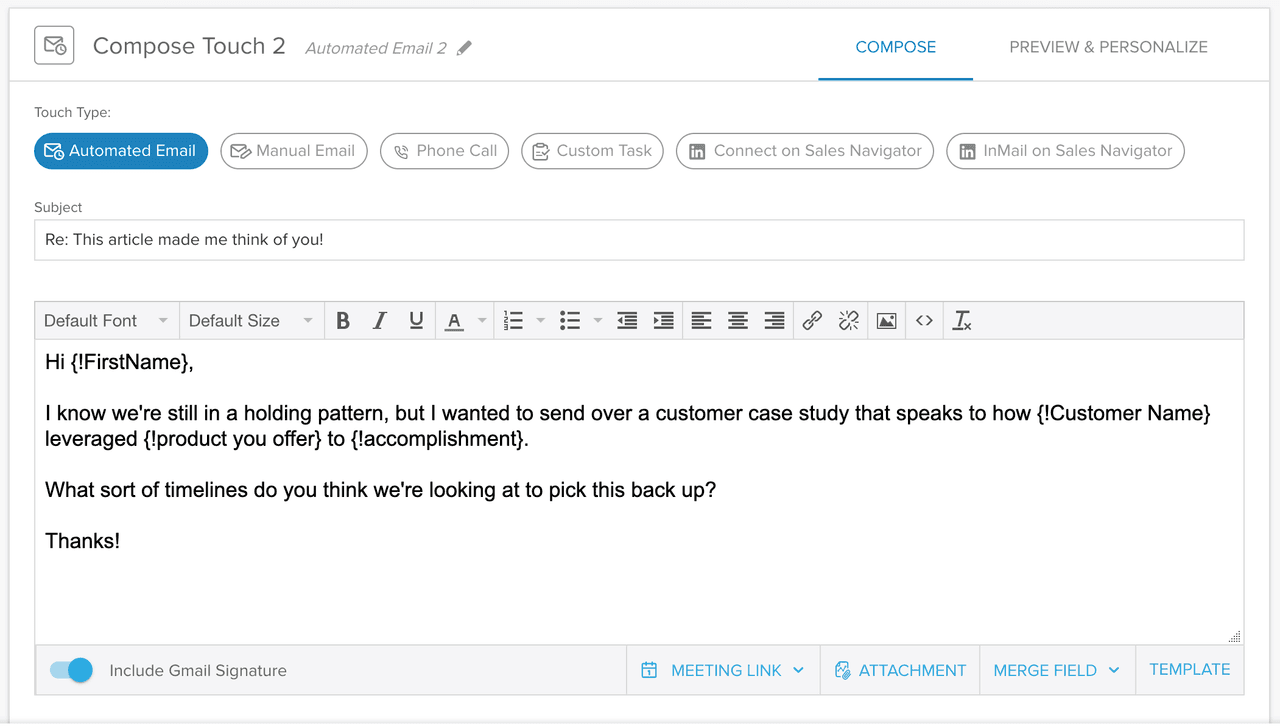
The touches will send automatically according to your designated time period and recipients will get removed from the campaign if they respond. Tools like this help make email prospecting a breeze.
Sales Prospecting Techniques For Cold Calling
9. Pick up the Phone – But Keep It Warm
According to research by Rain Groups, picking up the phone is still one of the most effective sales prospecting methods.  In the study above, it’s important to note that buyer personas prefer different prospecting methods.
In the study above, it’s important to note that buyer personas prefer different prospecting methods.
The study indicated that the buyers who prefer phone calls are:
- Tech buyers (54%)
- C-level and VP buyers (57%)
- Directors (51%)
- Managers (47%)
For many salespeople, warm calling feels a lot more comfortable than cold calling because a connection has already been established.
In order to turn cold leads into warm ones, they need to have a prior idea about who you are and what you’re offering.
To do this, you might ask to get recommended by a shared connection or interact with them on social media to create that initial spark. It’s then up to you to keep that fire burning.
10. Use Trigger Events to Be Relevant
One of the secrets to successful outreach is great timing. If you know your prospect is in the market for your solution, you’re far more likely to attract their interest.
There are plenty of publicly available resources that can help you distinguish if a company is ready to buy.
Search recent news on your prospect and set up Google Alerts to keep tabs on future updates.
In your research, look for clues like:
- Funding: When companies close new funding rounds or report strong annual revenue, they’re much more likely to buy from you because they can afford the investment.
- New executive hires: New C-suite hires are often looking to get great results for the company and are open to innovation.
- Company expansions: Opening new offices is a sign of strong company growth that can indicate readiness for continued investment.
- Major company news: Significant company milestones, such as winning a large contract or releasing a major product update, can be an opportunity to congratulate and start a conversation.
See more here: 10 Sales Triggers to Utilize for Outreach.
11. Pay Attention to Your Talk/Listen Ratio
Various studies have found that top-performing sales reps listen more than they talk.
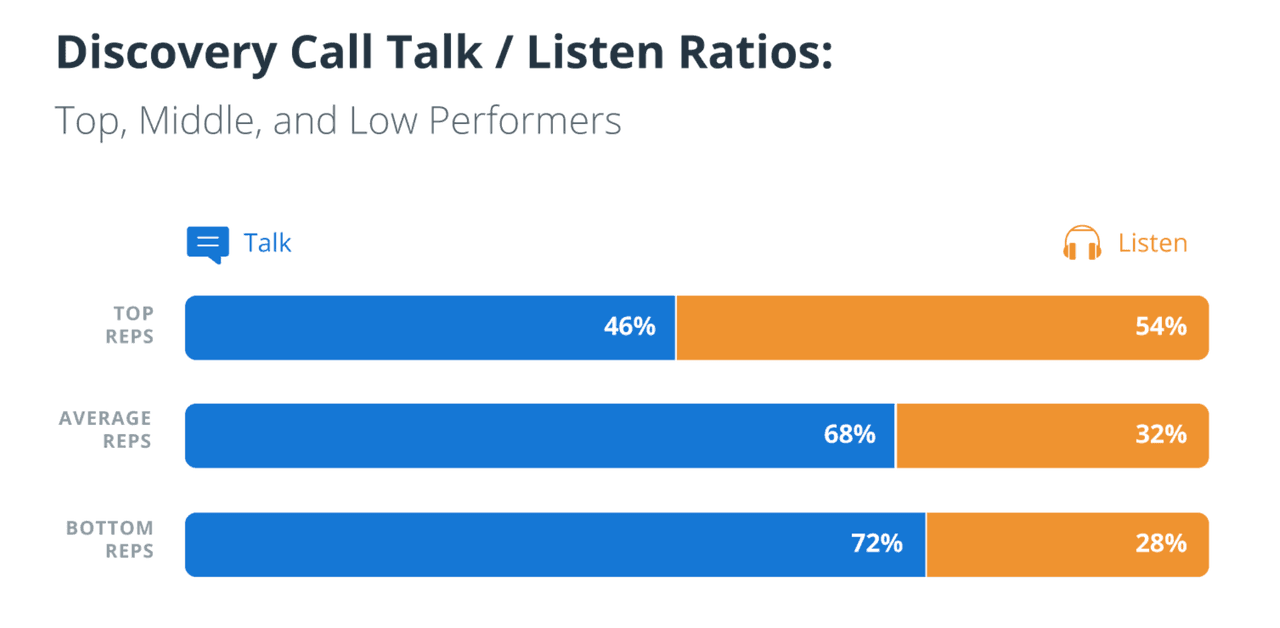
On a cold call, it’s hard to resist the urge to start rambling on about how great your product/service is and why it’s a good fit for the person on the other end of the phone.
But you must resist.
Your phone call will go much better if you open up the floor to discussion. You can do this by asking open-ended sales questions that’ll get the prospect talking.
By doing so, you 1) make them feel valued and understood and 2) allow yourself to gain valuable insights into your prospect’s needs so that you can tailor your solution around their unique situation and pain points. 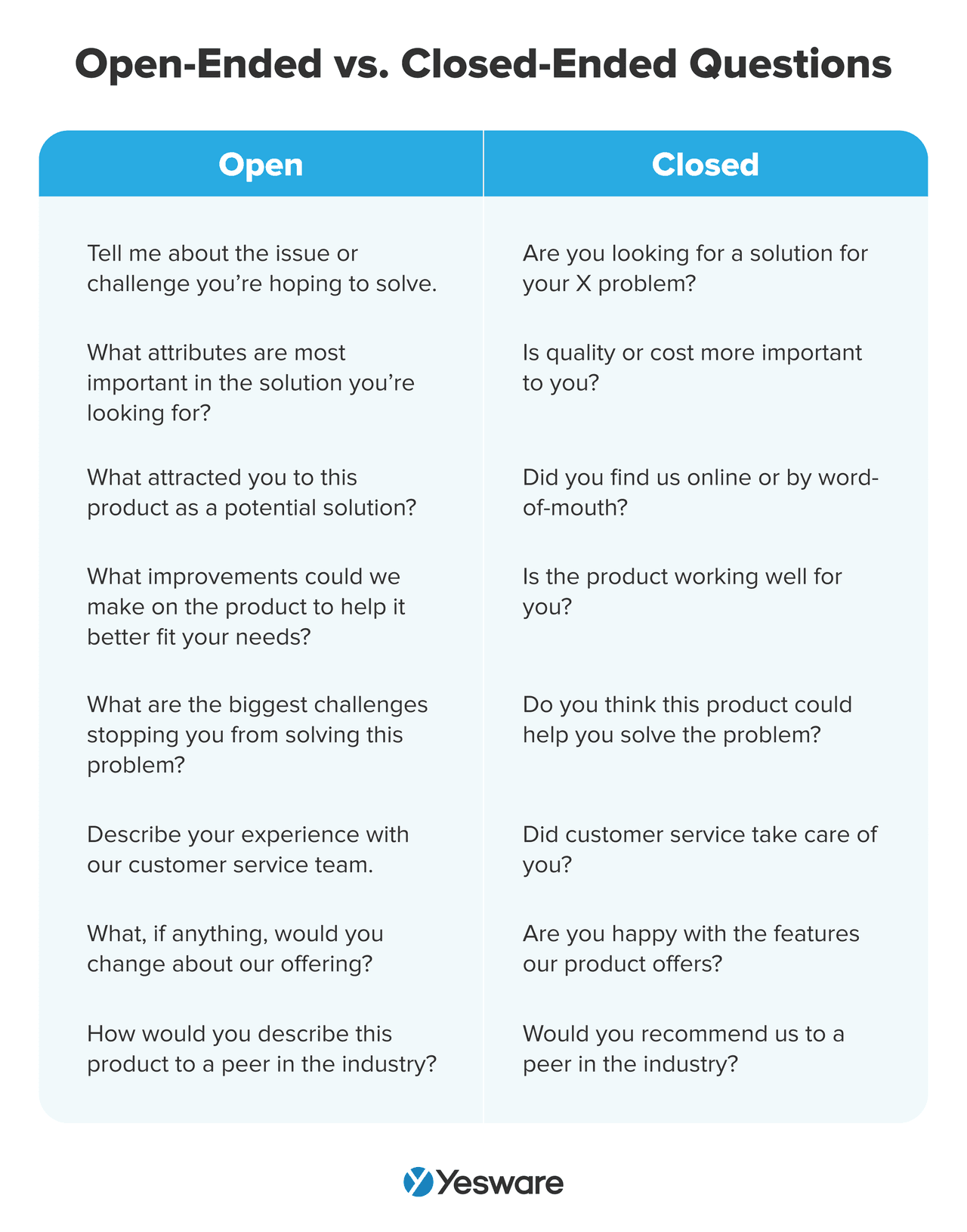 If you can achieve a solid talk-listen ratio, the prospect will undoubtedly look back on the conversation in a more positive light.
If you can achieve a solid talk-listen ratio, the prospect will undoubtedly look back on the conversation in a more positive light.
12. Prepare a Strong Opening Sentence
When making cold calls, you have about ten seconds to prove that you’re worth talking to. In the first 10 seconds, you have to differentiate yourself from other callers.
After introducing yourself, turn the focus to your prospect by weaving in your research and personalizing the call.
Here are some strong opening sentences that focus on your prospect, not you.
“I saw your post about _____”
“I noticed you manage _____”
“Congratulations on _____”
“Great insights on _____”
“I’m inspired by the work you’ve done on _____”
To make sure you’re entering each call with a personal statement, create a spreadsheet where you write a custom sentence for each prospect. That way, you start each call on a positive note and grab their attention right off the bat.
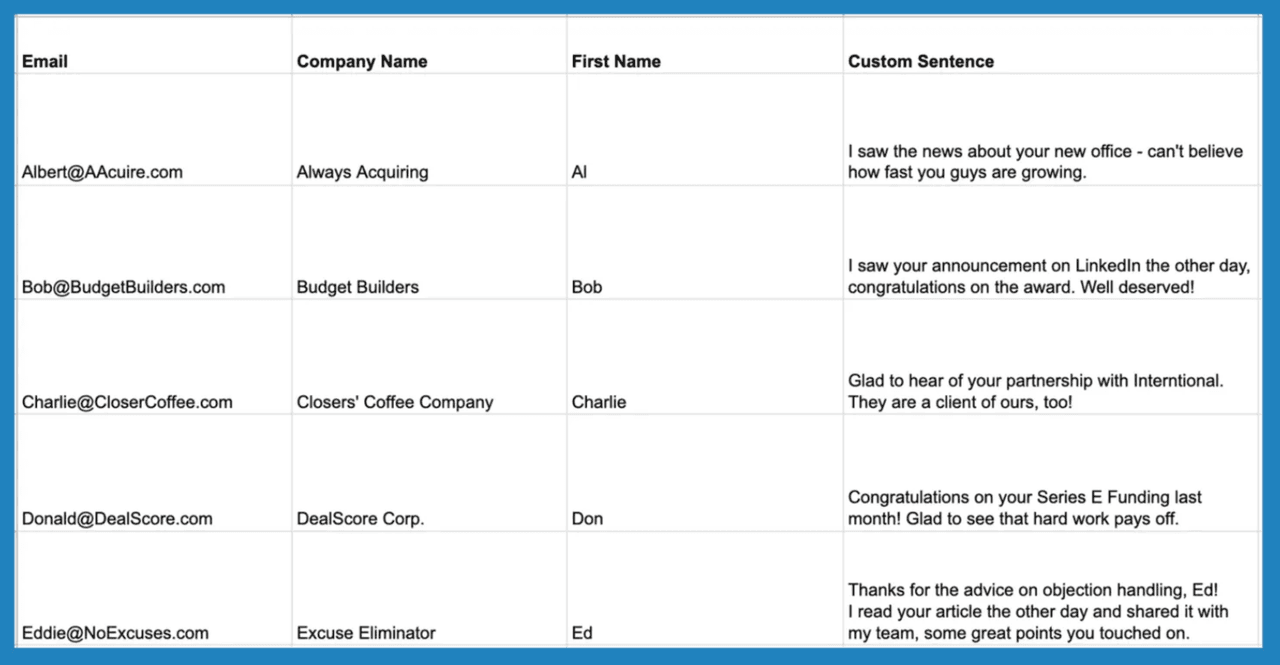
Interested in the spreadsheet above? Grab it for free below.
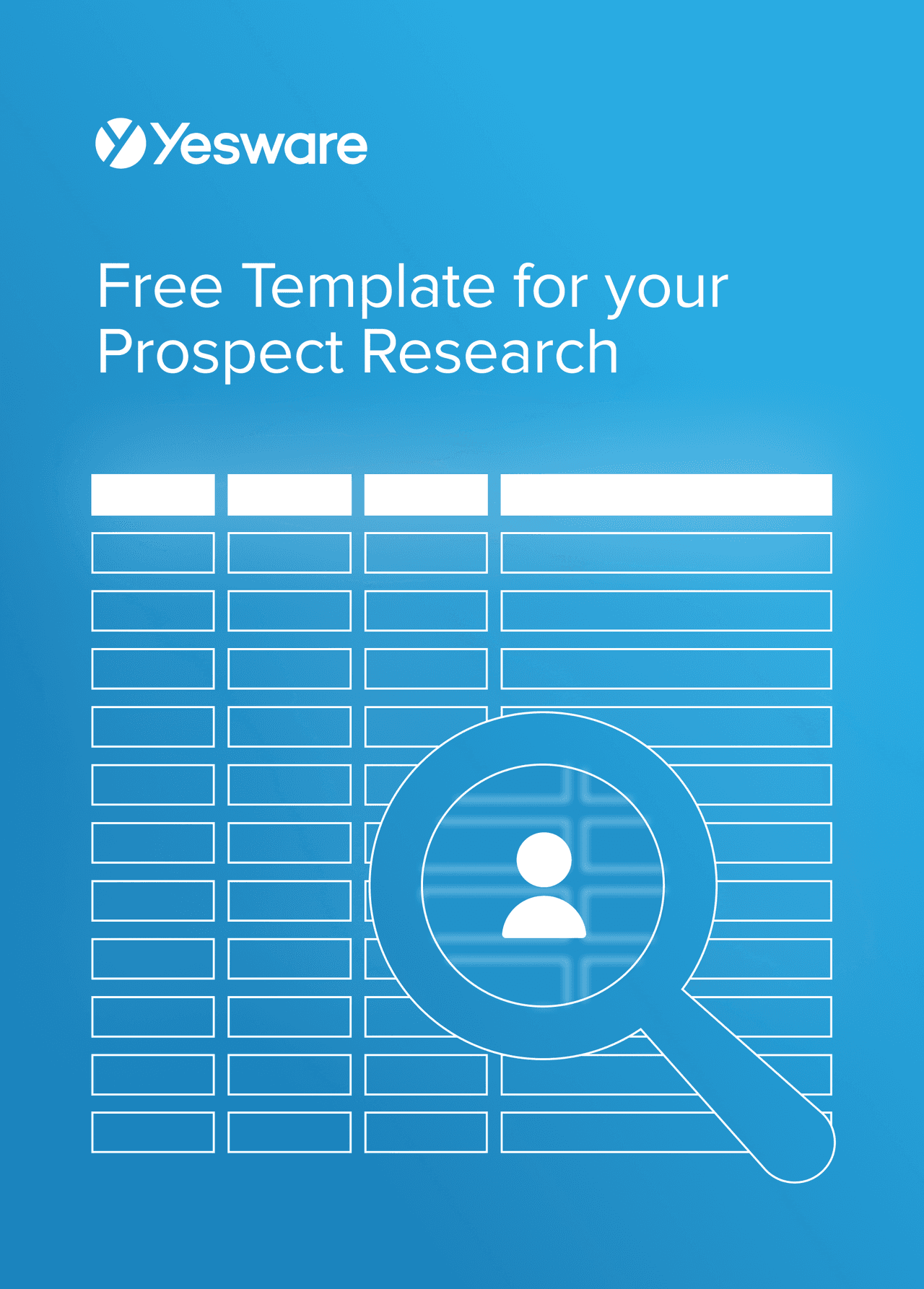 Free Template for Your Prospect ResearchThis customizable template will help you organize all prospect research in one place so you can quickly personalize outreach.
Free Template for Your Prospect ResearchThis customizable template will help you organize all prospect research in one place so you can quickly personalize outreach.
13. Always End The Cold Call With Next Steps
Never hang up without discussing the next steps.
End the call with “when should we reconnect to discuss ______?” then send a calendar invite for the follow-up call. This will ensure nothing slips through the cracks.
If you get into a habit of ending your call with this question, then immediately sending a calendar invite, you’ll avoid the tedious follow-ups of figuring out when your next meeting is.
You can ensure that you don’t forget this by including “Next steps” in your calendar invite. Here’s a basic outline for a meeting agenda:
Proposed Agenda:
- Company Goals & Initiatives
- Overview
- Next Steps
Sales Prospecting Techniques For Social Media
14. Show off Your Expertise
The term “thought leader” isn’t just a buzzword doing the rounds.
It refers to someone who is looked up to as an expert in their field. By doing so, you instantly become a trusted resource. And we all know that trust is a vital ingredient of successful conversations with prospects.
This will immediately build up your credibility and get potential customers more willing to talk to you.
How to do this: Share high-quality content that is relevant to your audience such as industry-related articles, tips, and studies. Then, get involved in the comments and discussions around the topic.
For example: Chad Fahey, Account Executive at Yesware, consistently posts insights and tips on industry topics and discussions.

15. Join LinkedIn and Facebook Groups
With LinkedIn and Facebook Groups, you’ll instantly be connected with professionals in your industry.
Within these groups, you can engage with members, answer questions, and share useful information. Once you build more connections, your prospecting efforts will become much more natural — you can immediately warm up your cold outreach.
To find relevant groups on LinkedIn, simply enter your keywords into the search bar and filter the results to show “Groups”.
For example, if you sell software to financial advisors, search for groups that focus on that target market.
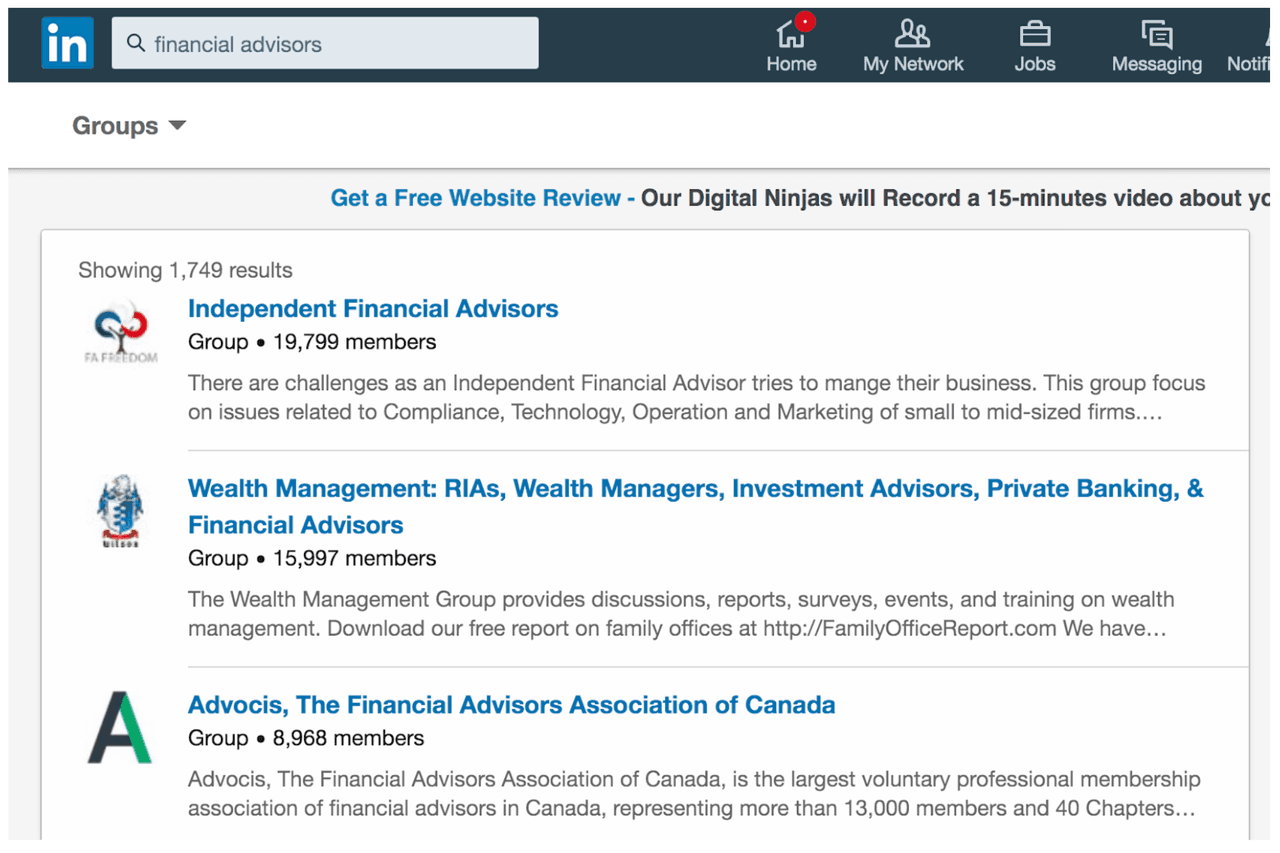
Do the same on Facebook to seek out even more relevant prospects.
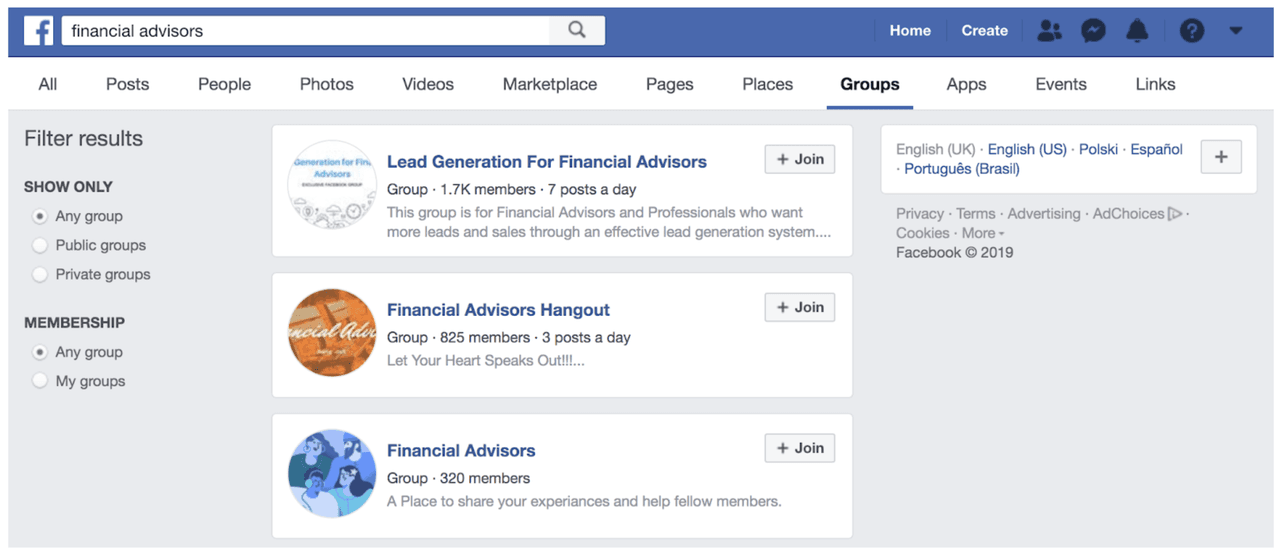
16. Connections Breed Connections
The more connections you have, the more connections you’ll make.
A good rule of thumb is to always connect with customers you close deals with or someone you meet professionally.
This will 1) help you get quality referrals 2) allow you to mention mutual connections in your outreach and 3) help you spark conversation with prospects.
It’s a win-win for warming up outreach and building rapport.
17. Use LinkedIn to Map Out Organizations
When identifying leads, it’s important to map out the organization. By using LinkedIn, you can better understand the team layout, departments, who the decision-makers are, etc.
This will give you a clear picture of how the organization is laid out. After you map out the organization, pick 2-3 stakeholders (which is necessary for B2B sales), add them to your CRM, and start to reach out in a personalized way.
Use pieces of personalization from their profile to show that you’ve done your homework.
Tip: 40 ways to use LinkedIn for sales here.
18. Find Potential Customers Through Twitter
Many sales professionals don’t even consider Twitter as a prospecting tool.
And they’re missing out — because it’s one of the most powerful prospecting tools at your disposal.
Not only can you find your ideal contacts, but you can also see a more personal side of them that they might not share on more professional platforms like LinkedIn.
The best place to start is Twitter’s Advanced Search. For example, if you’re selling a tool that makes it easy for marketing teams to repurpose content, you’d likely want to reach marketing team leaders:

When your results come up, choose “People,” and you’ll instantly see a list of potential prospects:

19. Find Potential Customers Through LinkedIn
LinkedIn Sales Navigator is a great tool for lead generation. This tool is a paid-for tier of LinkedIn.
With LinkedIn Sales Navigator, you get the “Advanced Search” feature to search for leads based on finely tuned search criteria and save them to lists to follow up on later.
Here’s an example of how detailed the search functionalities are with “Advanced Search:”
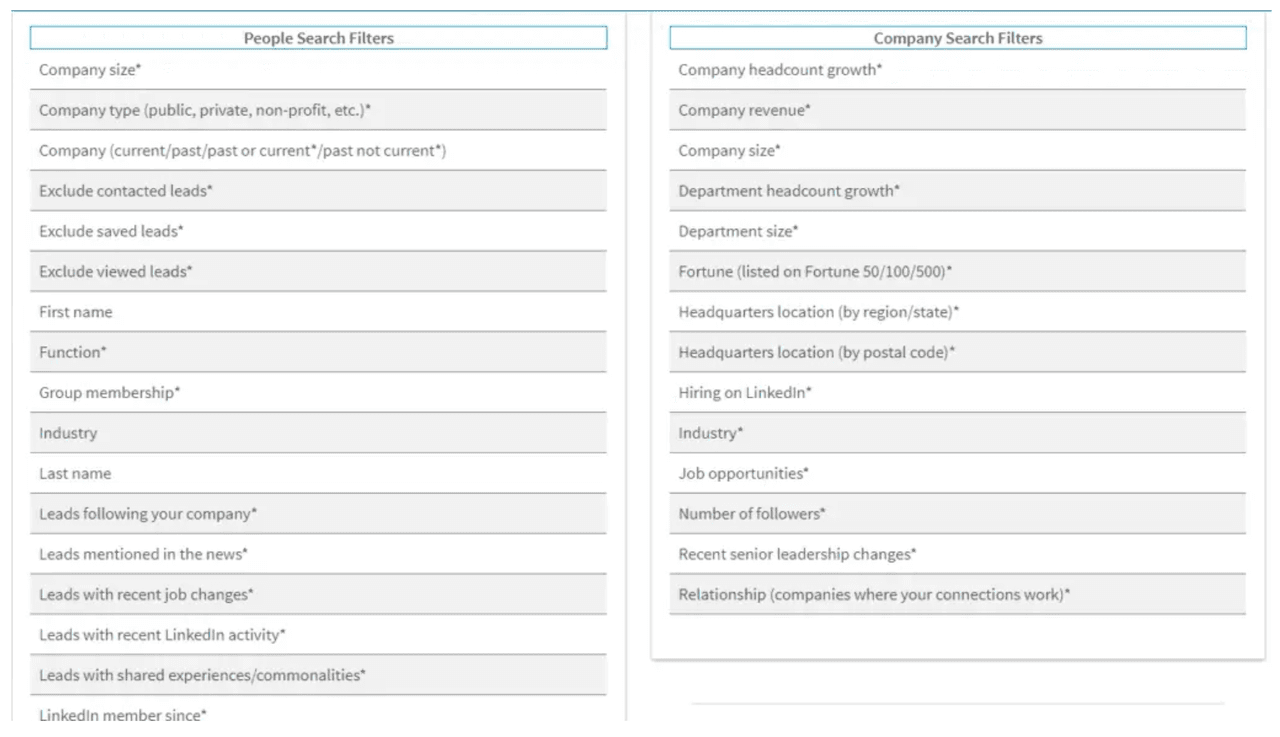
Sales Navigator will also recommend leads for you, based on your prospecting activity. It’s an easy way to rapidly spin up a long list of potential prospects.
20. Be Social on Social Media
If you’re the kind of person who only posts about your offering and selling it on social media, it’s time to stop. You’re essentially screaming into the void by doing this.
Research shows that sales teams that regularly tap into social selling are 40% more likely to hit their revenue goals than those that don’t.
Take heed of the “social” part of social media and get involved in discussions about your industry and product.
Conclusion
Sales prospecting doesn’t make a lot of salespeople jump up and down for joy. But it doesn’t have to be such a struggle.
By using the sales prospecting techniques we’ve laid out here, you can form a strong process that gets you regularly talking to potential customers and identifying good fits. You’ll reap the rewards through compensation and better buyer conversation outcomes.
See what works for you and your team, continue to try out new techniques, and you’ll reach sales prospecting success in no time at all.
This guide was updated on March 21, 2023.
Get sales tips and strategies delivered straight to your inbox.
Yesware will help you generate more sales right from your inbox. Try our Outlook add-on or Gmail Chrome extension for free, forever!
Related Articles
Casey O'Connor
Casey O'Connor
Melissa Williams
Sales, deal management, and communication tips for your inbox

